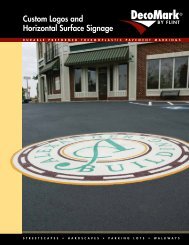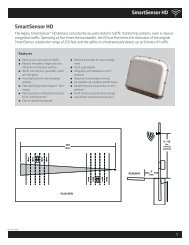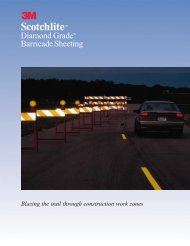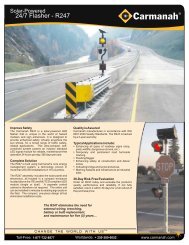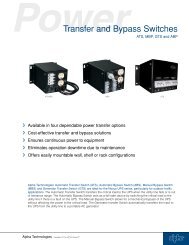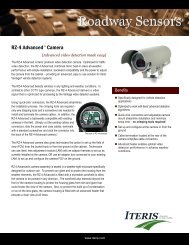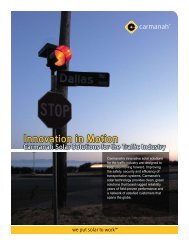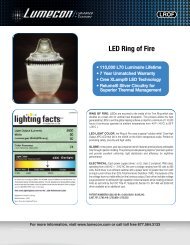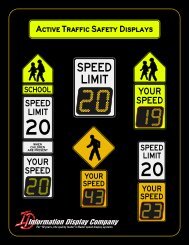SmartSensor HD - Interprovincial Traffic Services
SmartSensor HD - Interprovincial Traffic Services
SmartSensor HD - Interprovincial Traffic Services
Create successful ePaper yourself
Turn your PDF publications into a flip-book with our unique Google optimized e-Paper software.
82 CHAPTER 7 • DATA SETUP & COLLECTIONreversible lanes, where traffic goes different directions in a lane depending on the time ofday. In this case, for part of the day the vehicles would be counted in the Right bin; duringthe other part of the day, the vehicles would be counted in the Wrong bin.The class bins allow you to classify vehicles by ranges of lengths. If you’re not sure whatlengths to use, consult your own agency’s guidelines. If your agency has no set classificationscheme, you can look to the measurements in Table 7.2 as an example; the tables show ascheme called Scheme F, developed by the Maine DOT.4 Classification BinsLengths Scheme F0–10 110–19 2, 319–35 4, 5, 635–256 7-136 Classification BinsLengthsScheme F0–10 110–19 219–24 324–54 4, 5, 6, 754–109 8, 9, 10109–256 11, 12, 13Table 7.2 – Scheme F Length ClassificationsApproachesApproaches are groupings of lanes used in data collection. Using approaches allows you tocollect per vehicle–based statistics that you could not otherwise get, such as the 85th percentilespeed for all northbound lanes, and to store these statistics onboard the sensor. Beaware that adding approaches will increase the size of your data reports, which will affectthe number of these reports your sensor can store in its onboard memory. See the StorageStatus section of this chapter for more information.Click the Approaches button in the Data Collection window to group lanes together infour different approaches (see Figure 7.11).



